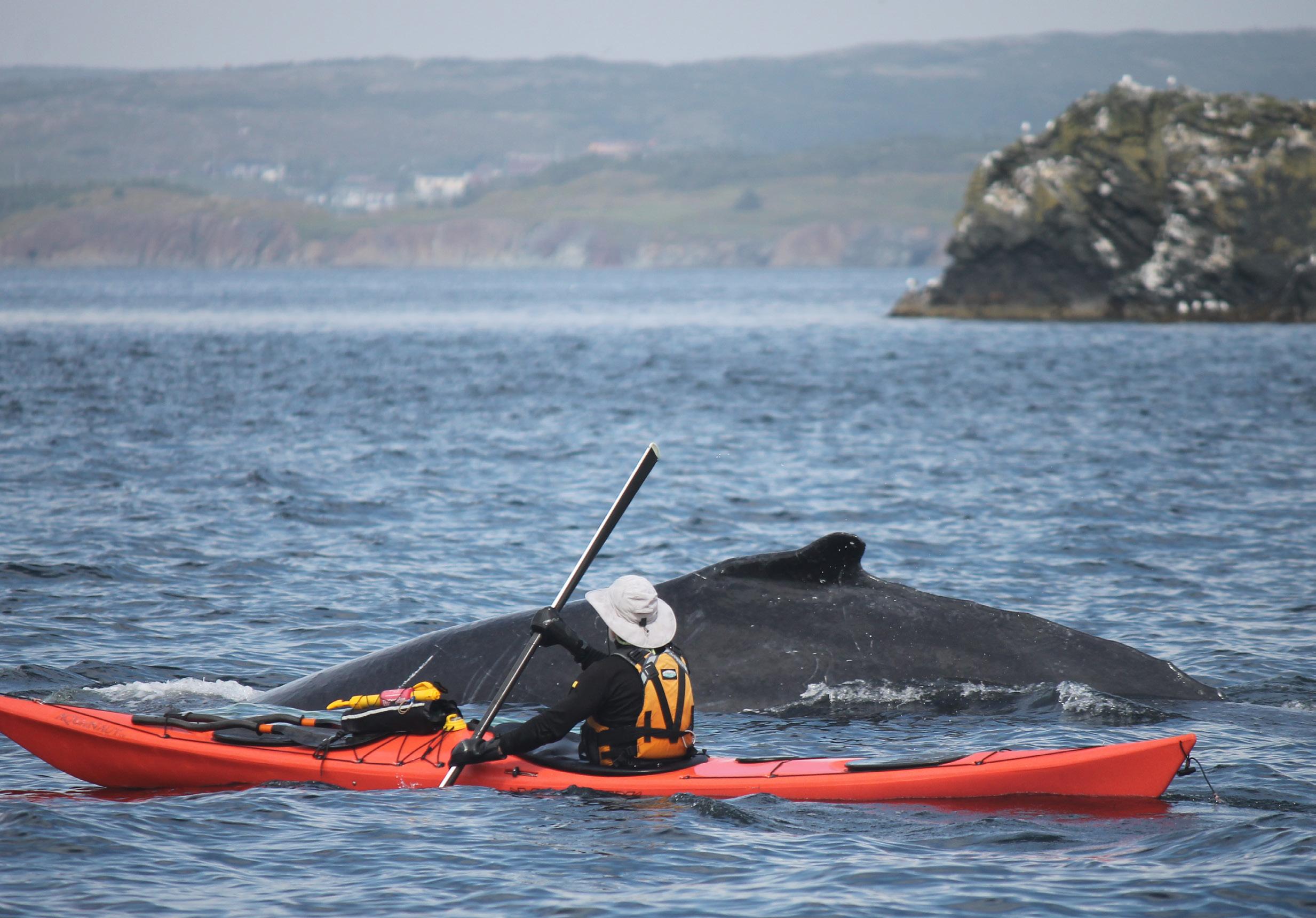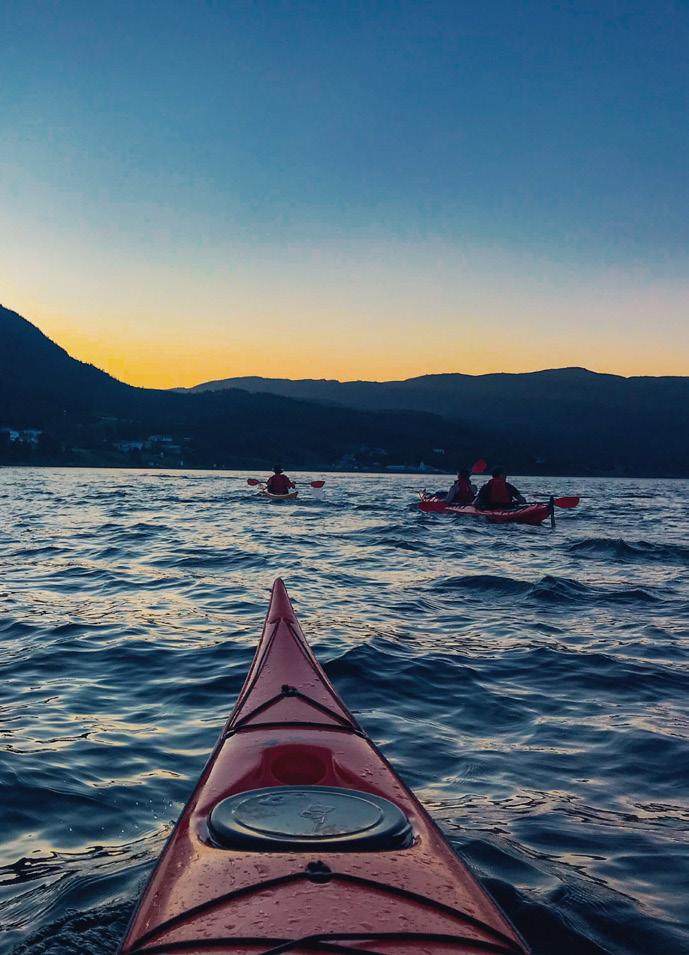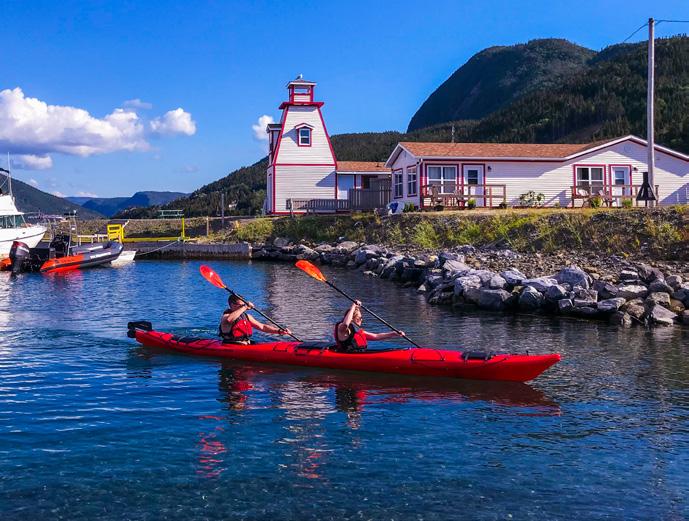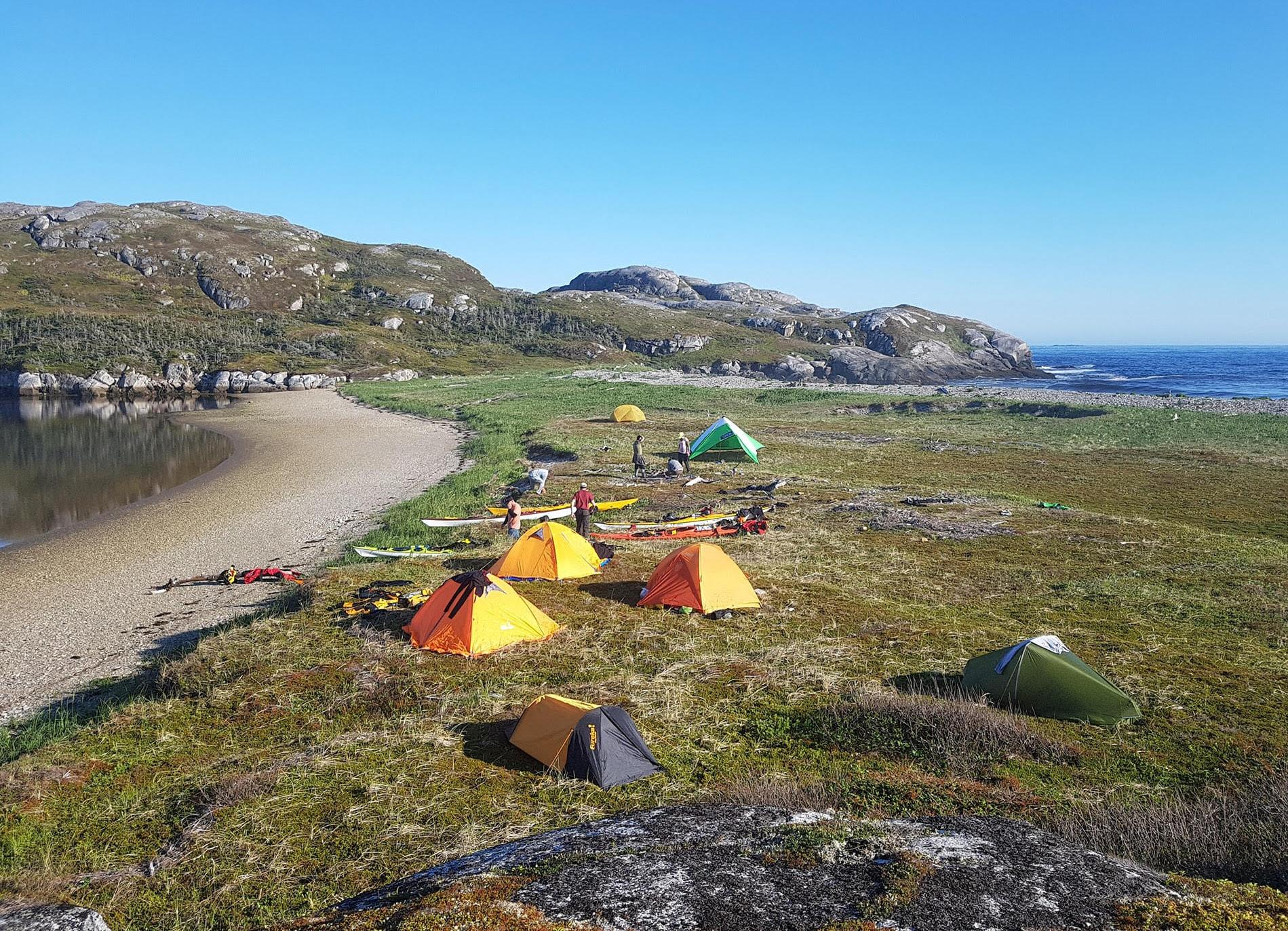
5 minute read
Stick your paddle in
Sea kayaking in Newfoundland offers great scenery, and thrills to boot
BY DENISE FLINT
The humpback didn’t exactly come out of nowhere. “Skipper” Bob Bartlett, owner of Trinity Eco-Tours in Trinity, Newfoundland, had been watching it approach. A member of his tour group had just asked if a whale ever came too close to the kayaks and he was patiently explaining that the animal knew what it was doing, knew where the kayaks were and would never do such a thing.
“I didn’t have the words out of my mouth when I was picked up,” he exclaims. Bartlett found himself riding the whale’s back as it came up to blow. The animal submerged again almost immediately, possibly because it realised it had an inadvertent passenger, and Bartlett and his kayak landed safely, right side up, back on the surface of the water, no harm done. He laughs about it now but admits, “I didn’t know how that was going to turn out. It was an amazing experience—after the fact.”
Although Bartlett’s experience was the kind that only happens once in a lifetime— if then—sea kayaking in Newfoundland features on many bucket lists. And it’s not just for the opportunity to get close to the whales, although that certainly features in the equation.
Becky O’Keefe and her partner, Alex Chafe, run Wild Gros Morne on the island’s west coast. Their kayaking tours are based in Bonne Bay, which O’Keefe calls the perfect location: a fjord where two glaciers met some 15,000 years ago.
Frequent animal sightings include humpbacks, minkes, white-sided dolphins, tuna and schools of mackerel that make the water look like it’s bubbling, as well as river otters and foxes on the secluded beaches that kayakers are able to access.
“It’s a lively area, but that’s a bonus,” says O’Keefe, whose company focusses on interpretation and education about the area. “The scenery is what’s special about Bonne Bay. You’re seeing the layers of colour, with great views of Gros Morne Mountain and all the little communities,



quintessential villages. It’s really a lovely, well-rounded place.”
Kayaking tours, which are limited to a maximum of 12 participants, last about two hours. However, participants are warned not to watch the clock or try to fit the tour into a packed itinerary. “If there’s stuff to watch, like a pod of dolphins, we’re going to watch it,” says O’Keefe.
That leisurely attitude is one of the draws of kayaking. Bartlett’s kayak tours are also meant to be an unrushed experience. “Some can do a tour in one hour and that’s not what you want because it’s a three-hour tour.”
The point is not to race to the end, but to enjoy the journey, since one of the big draws with kayaking is the immersive experience. There’s no motor coming between you and the sounds of nature and you’re practically at eye level with the water, not metres above it. If there’s something to see, hear or even touch you’ll find it. “In the little coves where it’s shallow and you look down there’s so much there to see,” says O’Keefe.
That unhurried approach makes kayaking a great pastime for all the people who prefer potato chips to pilates or whose more athletic days are behind them. Kayaking is for all ages and abilities. It’s low impact and doesn’t require a great deal of strength. Basic mobility is all that’s required—and enthusiasm. “You don’t have to be fit at all,” says Bartlett. Tours are tailored for the people doing the paddling and may include people of all different skill levels. In fact the majority of people trying kayaking for the first time are older adults.
When most people think of kayaking, they think of small single boats that can tip at the drop of a hat—or wave—and require some degree of skill on the part of the paddler to roll them back over again. That’s not the case with modern kayaks. Most sea kayaks are built for two people and are long, wide and stable. Tipping them is very difficult and if by chance one does manage to roll over the guides are trained and experienced in getting people out of the water and back into their kayak. Most of Bartlett’s and O’Keefe’s clients are first timers, and before any trip they are properly fitted out in wet suits and protective gear and given an introductory lesson on how to paddle.
The double kayaks are an added bonus for most adventurers because the majority of people who give it a whirl are couples who are able to share the boat and the experience. On the more practical side, since they share the paddling work, if one is fitter they can compensate for the other.
Perhaps it’s the outdoor equivalent to baking bread during pandemic times, but interest in kayaking has skyrocketed. David Hickey is the president of Paddle Newfoundland and Labrador and he figures their numbers grew by 25 per cent in 2020. Although the organisation is for all paddlers, kayakers dominate the ranks. Hickey says that, just like those who go on a commercial kayak tour, most people who get into kayaking as a hobby are older—usually aged 50 or more.
Some club members are strictly recreational, only going out on calm, clear days; others are more extreme, paddling up to 35 kilometres a day and going on multi-day excursions.
For Hickey, who puts his kayak on the back of his truck in June and doesn’t take it off again for the entire season, kayaking in Newfoundland is just a case of “pick your spot.” However, he does think that Burgeo, on the south coast of the island, is the jewel in the crown.
Bartlett describes the jaw dropping experiences possible while paddling as “Discovery Channel moments.” Whether you’re after a close encounter with a pod of orcas, an isolated beach to pull up to for lunch or a simple boil up, or sea caves and the other side of waterfalls to explore, there’s something for everyone in a kayaking trip around Newfoundland.

Norman’s Head
WILD GROS MORNE OUTDOOR EXPERIENCES Water’s Edge Campground & Shoal Brook Lighthouse
Gros Morne
WILD GROS MORNE OUTDOOR EXPERIENCES










